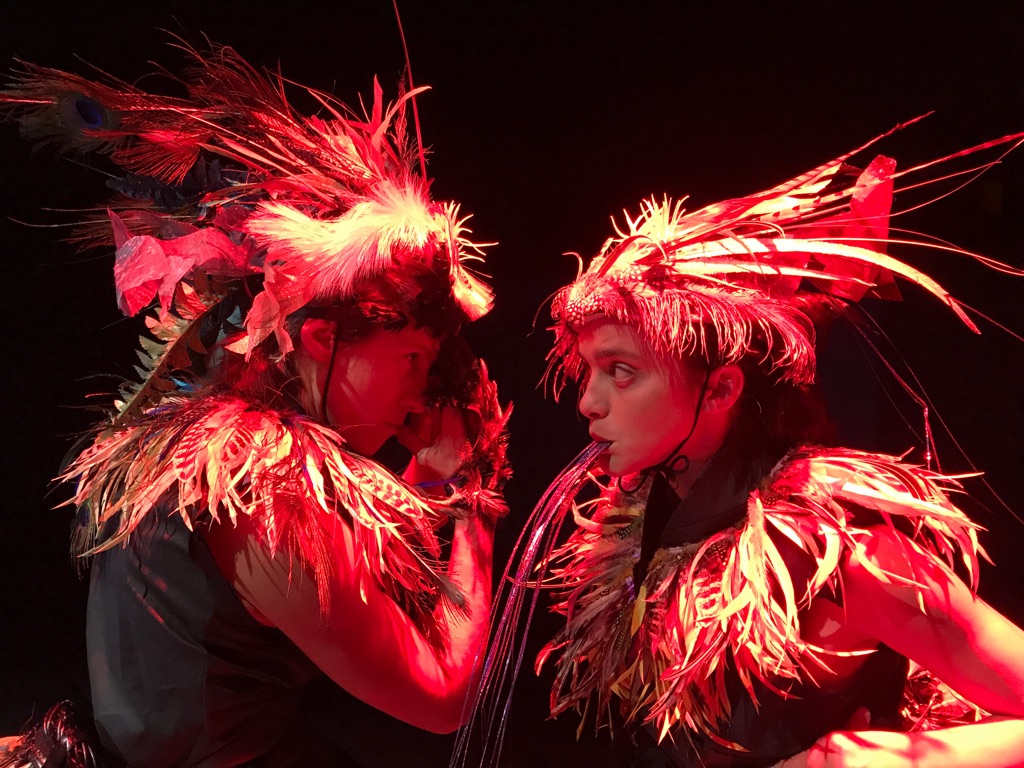
Canti Guerrieri
direction Claudia Sorace
music dramaturgy Riccardo Fazi
with Annamaria Ajmone, Sara Leghissa
featuring Isabella Giuliani, Giulio Segato, Cecilia Torossi, Guntram Wildpanner
technical direction, video Maria Elena Fusacchia
assistant director Chiara Caimmi
musical ensemble Ensemble Arte Musica
conductor, harpsicord Francesco Cera
musical consultant Alessandro Taverna
dramaturgy collaboration Ilaria Mancia
organization Martina Merico
costumes Fiamma Benvignati
lights Gianni Staropoli
conversations on imaginery Michele di Stefano
stage pictures Maria Elena Fusacchia
in collaboration with Festival di Santarcangelo
with the support of Mibact – Ministero dei Beni e delle Attività Culturali – Direzione Generale Spettacolo, Regione Lazio, Assessorato alle politiche culturali, spettacolo e sport
The Roman company has decided to respect every note and every comma of the original score in order to restore its extraordinary contemporary relevance and its breath-taking rhetoric permeated with the joy and the primal, carnal, visceral and war-like violence of love. On the stage, which is set like a battlefield, Muta Imago will be performing together with two Italian dance celebrities (Anna Maria Ajmone and Sara Leghissa) as well as Ensemble Arte Musica.
This open space becomes the ground for preparing for war or love, as well as the place where polyphony becomes musical theatre. This is where the theatre where the final drama of the Combattimento di Tancredi e Clorinda will be staged will be materially and visually constructed. Lastly, video projections make the dancers’ bodies into authentic landscapes of tension and desire.
Body and movement, because as Jean Luc Nancy says in his Dehors la dance “dance begins before becoming sensible” and it’s exactly in this way that one falls in love: falling in love is an event that begins before the sensation, before sense in general.
Two bodies, incredibly different from each other, show to the world their characteristics, stating their mutual otherness: faraway, so close. Then they gradually pass on each other, they cross and exchange paces, rythms and imaginations.
Everything revolves around the concept of love as fight, the identification between the love fight and the war one: seduction as conquest, love as departure from a state of tranquility and entrance in a dimension of mistery and loss of self.
How to translate terms like seduction and conquest in body language?
We decided to study the concept of “mating” in the animal kingdom: all that complex system of body and movement rituals that animals, expecially birds, activate in order to raise desire in the partners and convince them of their strength and sensuality. From there we analyzed how these animal dynamics are picked up and translated into dances by some nomadic african tribes of Center Africa, like the Wodabees.
This work it’s been about going to the heart of the question: love as push of desire, desire as exhibition of one’s self, intercourse as exchange and nullification of identity.
The sacrifice behind Monteverdi’s Combattimento lies exactly behind the gesture of undressing one’s armour and going naked towards the suspended place between one’s self and the other: the only place where a love meeting could really happen. We asked to the dancers to make the other’s body resonate in their own, to receive the other’s body on themselves, in order to move from mating to the creation of a meeting that doesn’t simply decline itself in touching outside the selves, but in bringing the other’s body inside ours, in imitating it, in adopting it.
A strong shift of vision came consequently: the “educated and corteous” Monteverdi’s music met an unusual and wild imaginary: two worlds apparently far away, but with many undiscovered things in common.
At the center of the space, the jungle, the “horrible and thick” wilderness surrounding Tasso’s Jerusalem, the place of danger par excellence where love meets war and desire knows fear.






